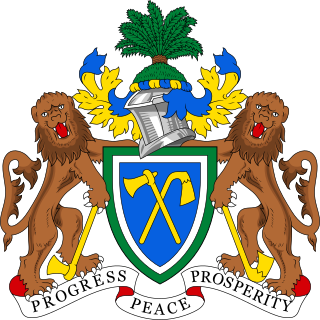Top Qs
Timeline
Chat
Perspective
Elections in the Gambia
From Wikipedia, the free encyclopedia
Remove ads
The Gambia elects on national level a head of state – the president – and a legislature. The president is elected for a five-year term by the people. The National Assembly has 53 members, 48 members elected for a five-year term and 5 members appointed (the fifth nominated member is the Speaker).
This article needs to be updated. (February 2013) |
The Gambia was a one party dominant state with the Alliance for Patriotic Reorientation and Construction formerly in power until their defeat in 2017.
Opposition parties are allowed as part of a multi-party political system
Following the December 1, 2016 elections, the elections committee declared Adama Barrow winner of the elections. Incumbent president Yahya Jammeh accepted defeat on December 2.[1]
Remove ads
Implementation
For presidential elections, electors drop marbles in drums. There is one drum for each candidate. The drums are identified with the picture of the candidates and the colors of their parties.[2] After identifying themselves, the electors' left forefinger is dipped in indelible ink to avoid repeated voting. Then they receive one marble and, in the secrecy of the polling booth, drop their marble in the chosen drum.[3] A bell confirms the voting. After the voting, the marbles are quickly counted. The marble system dates to 1966.[2]
Remove ads
Latest elections
2013 local election
2016 presidential election
2017 legislative elections
2021 presidential election
2022 legislative elections
See also
References
External links
Wikiwand - on
Seamless Wikipedia browsing. On steroids.
Remove ads
